Easy DIY Wreaths to Decorate Your Doors
Welcome to the wonderful world of DIY wreath-making! If you've ever walked past a beautifully adorned door and thought, "I wish I could create something like that," you're in the right place. This article explores simple and creative DIY wreath ideas that can enhance your home's entrance. Whether it's for a holiday, a season, or just because, making your own wreath is not only a fun project but also a fantastic way to express your personal style. Imagine the joy of crafting something that not only beautifies your home but also makes you feel accomplished every time you see it hanging on your door. Let's dive into the exciting journey of wreath-making!
Before you start crafting your masterpiece, it's essential to select the right materials. The beauty of DIY wreaths lies in the variety of options available to you. You can choose from a plethora of materials such as natural elements, artificial flowers, and seasonal decorations. Each option brings its own unique charm to your wreath, allowing you to tailor your creation to fit your style and theme. For example, if you're going for a rustic look, consider using twigs, pinecones, and dried flowers. On the other hand, if you prefer a modern aesthetic, bright artificial flowers and clean lines might be more your speed. The choice is yours!
One of the best aspects of DIY wreaths is their versatility throughout the seasons. Seasonal wreaths can bring a fresh look to your door all year round. Think about crafting wreaths for holidays like Christmas, Halloween, and Easter, using festive colors and motifs that reflect the spirit of each occasion. For instance, a Christmas wreath adorned with red and green decorations, or a Halloween wreath featuring playful pumpkins and spooky elements can set the tone for your home during those special times of the year. The possibilities are endless!
As the flowers bloom and the days get longer, spring wreaths often feature bright colors and floral elements that welcome the season with charm and beauty. Imagine stepping outside to a vibrant wreath that mirrors the freshness of spring! To create a stunning spring wreath, consider incorporating various flowers like tulips, daisies, or peonies. These lively blooms can be arranged in a way that creates a lush, inviting look. Don't forget to mix in some greenery, as it adds texture and depth, making your wreath feel more organic and full of life.
Floral arrangements are the heart of any spring wreath. When selecting flowers, think about not just the colors but also the shapes and sizes. A balanced arrangement will draw the eye and create a sense of harmony. Start with larger blooms as your focal points and fill in with smaller flowers to create a layered effect. You can also add accents like ribbons or decorative picks to give your wreath that extra pop!
Greenery is a crucial component in wreath-making, adding that lush, natural feel we all love. Consider using a mix of different types of foliage, such as eucalyptus, ferns, or even ivy. These elements not only complement your floral arrangements but also provide a beautiful contrast in texture and color. The key is to keep it balanced; too much greenery can overshadow the flowers, while too few can make your wreath feel sparse. Aim for a harmonious blend that showcases both elements beautifully.
As the leaves change and the air turns crisp, fall wreaths celebrate the rich colors of autumn. Imagine a warm and inviting wreath adorned with deep oranges, rustic browns, and golden yellows! To create a fall wreath, think about incorporating elements like colorful leaves, small pumpkins, and even acorns. These seasonal treasures can be arranged in a way that captures the essence of the harvest season, making your door a welcoming sight for guests and family alike.
Mastering various crafting techniques can elevate your DIY wreath projects to the next level. Techniques like wire wrapping, hot gluing, and using a foam base for stability and style can make all the difference in your finished product. Wire wrapping is essential for securing elements in your wreath, ensuring everything stays in place. Hot gluing is a quick and effective way to attach decorations, while a foam base provides a solid foundation for your design.
Wire wrapping is an essential technique for securing elements in your wreath. By wrapping floral wire around the stems of your flowers and attaching them to the base, you can create sturdy and visually appealing designs. It's a simple yet effective method that ensures your wreath holds up beautifully, even in windy conditions!
Hot gluing is a quick and effective way to attach decorations to your wreath. When using hot glue, make sure to apply it sparingly and allow it to cool slightly before pressing your elements into place. This helps ensure durability and a polished finish. Remember, patience is key; give each piece time to set before moving on to the next!
Adding personal touches to your wreath can make it uniquely yours. Consider incorporating monograms, family names, or custom decorations into your designs. Personalization not only showcases your creativity but also adds a special touch that reflects your family's identity. Think about using materials like wood or fabric to create initials that stand out on your wreath. It's these little details that truly make your wreath a one-of-a-kind piece!
Monograms can add a sophisticated touch to your wreath. You can use various materials, from wood to fabric, to create a stylish statement piece. Consider painting your initials in a bold color or using a contrasting fabric to make them pop against the backdrop of your wreath. It’s a simple addition that can elevate your design significantly!
Choosing the right color scheme can enhance your wreath's overall aesthetic. Think about the colors that complement your home and reflect your personal style. For example, if your home features earthy tones, a wreath with rich greens and browns would harmonize beautifully. On the other hand, if your decor leans towards vibrant shades, don't hesitate to incorporate bold colors into your wreath for a cohesive look.
Once your wreath is complete, displaying it effectively is key to showcasing your hard work. There are multiple ways to hang a wreath, from traditional hooks to decorative ribbons. Consider using a wreath hanger that complements your door's style, or get creative with a beautiful ribbon that adds an extra touch of elegance. The goal is to ensure your wreath stands out and enhances your door's appeal.
When it comes to hanging your wreath, functionality and style go hand in hand. You can opt for a simple over-the-door hook, or get crafty with a decorative ribbon that matches your wreath's color scheme. The way you display your wreath can significantly impact how it's perceived, so choose a method that highlights your creativity!
Rotating your wreath seasonally keeps your decor fresh and exciting. To make this easy, consider creating a storage system for your wreaths, labeling them by season or occasion. This way, you can effortlessly swap out your wreaths throughout the year, ensuring your home always looks inviting and well-decorated.
Q: What materials are best for a beginner DIY wreath?
A: For beginners, consider using artificial flowers and a foam base. They are easy to work with and provide a sturdy foundation.
Q: How can I make my wreath last longer?
A: To ensure longevity, store your wreath in a cool, dry place when not in use, and avoid exposing it to harsh weather conditions.
Q: Can I use fresh flowers in my wreath?
A: Absolutely! Fresh flowers can create a stunning look, but keep in mind they may not last as long as artificial ones. Consider using them for special occasions.
Q: How do I clean my wreath?
A: Gently dust your wreath with a soft cloth or use a hairdryer on a low setting to remove any debris without damaging the decorations.
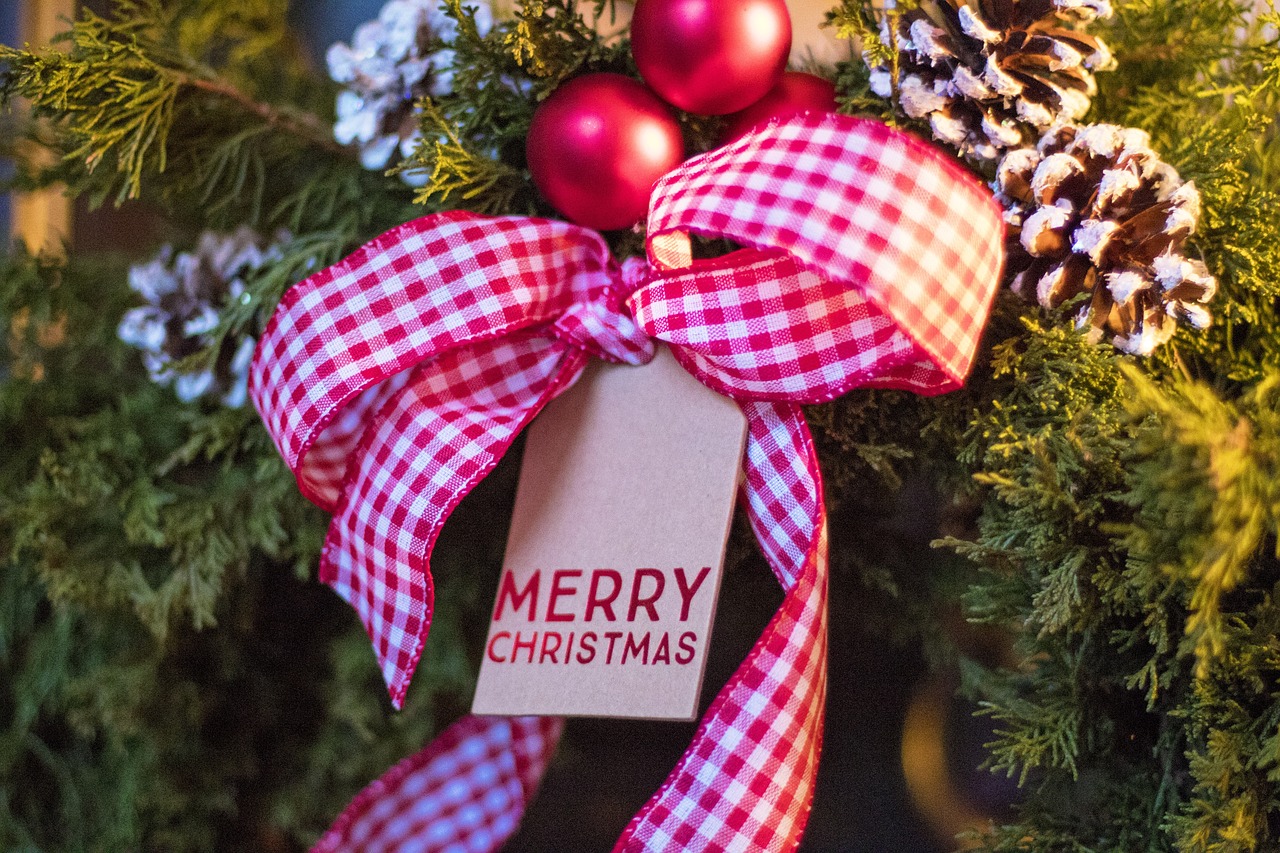
Choosing the Right Materials
When it comes to creating a stunning DIY wreath, is essential. The materials you select not only determine the overall look of your wreath but also its durability and how well it fits with your home’s decor. Think about the style you want to achieve—do you prefer a rustic, natural vibe, or something more modern and sleek? The options are endless, and here are some ideas to get you started:
Natural elements like twigs, branches, and dried flowers can bring a beautiful, organic feel to your wreath. These materials are perfect for a rustic charm and can be easily sourced from your backyard or local craft store. On the other hand, artificial flowers and foliage offer the advantage of longevity and can be found in a variety of colors and styles, making them ideal for seasonal wreaths that you want to display year after year.
Additionally, seasonal decorations can really enhance your wreath's theme. For instance, using pumpkins and gourds in fall wreaths or ornaments and ribbons during the holidays can add a festive touch. Don’t forget to consider the base of your wreath as well; whether you opt for a traditional straw base, a foam ring, or even a wire frame, the choice will affect how you attach your decorations.
Here’s a quick overview of some materials you might consider:
| Material Type | Pros | Cons |
|---|---|---|
| Natural Elements | Eco-friendly, unique textures | May not last long, can be fragile |
| Artificial Flowers | Durable, available in many colors | Can look less realistic, may fade over time |
| Seasonal Decorations | Adds festivity, customizable | Can be overdone, may clash with decor |
| Wreath Base (straw, foam, wire) | Sturdy foundation, easy to work with | Can be bulky, some materials may degrade |
Remember, the key is to mix and match these materials to create a wreath that not only reflects your personal style but also complements your home. Don't hesitate to experiment with different combinations until you find the perfect fit!

Seasonal Wreath Ideas
Seasonal wreaths are more than just decorations; they are a warm invitation to your home, reflecting the beauty and spirit of each time of year. Whether it's the blossoming flowers of spring, the vibrant colors of autumn, or the festive cheer of winter holidays, there's a wreath idea that can perfectly complement your entrance. Creating these wreaths can be a fun and fulfilling project, allowing you to express your creativity while enhancing your home's curb appeal. Let’s dive into some inspiring ideas for crafting seasonal wreaths that will leave your guests in awe!
For spring, think about incorporating bright colors and floral elements that symbolize renewal and growth. A vibrant wreath can be made using a variety of flowers such as tulips, daisies, and peonies. You can also consider adding some greenery to create a lush backdrop for your blooms. Imagine a wreath that bursts with color, welcoming everyone who approaches your door. You might even want to include some decorative eggs or butterflies to enhance the spring theme!
As we transition into summer, your wreath can reflect the joy and warmth of the season. Consider using sunflowers, wildflowers, or even tropical elements like palm leaves and seashells. A nautical theme can also be fun, especially if you live near the coast. Picture a wreath adorned with starfish and coral, giving a refreshing seaside vibe to your entrance. Summer wreaths should evoke a sense of relaxation and joy, inviting guests to enjoy the sunny days ahead.
When autumn rolls around, it’s time to celebrate the rich, warm colors of the season. Fall wreaths can be crafted from an array of materials such as dried leaves, mini pumpkins, and even pinecones. The combination of oranges, reds, and browns creates a cozy atmosphere that’s perfect for welcoming guests during the harvest season. You might want to add some burlap or twine for that rustic touch, making your door feel like a warm hug against the crisp fall air.
Finally, as the holidays approach, winter wreaths can add a touch of magic to your home. Think about incorporating evergreen branches, holly, and even ornaments to create a festive display. A classic holiday wreath can be adorned with red ribbons and pinecones, or you could go for a more modern look with metallic accents and geometric shapes. Whatever your style, a winter wreath can set the tone for a joyful holiday season.
In summary, seasonal wreaths are a fantastic way to keep your home looking fresh and inviting throughout the year. By using different materials and themes, you can craft wreaths that not only reflect the changing seasons but also showcase your personal style. So, gather your materials, unleash your creativity, and let your door tell a story with every wreath you create!
- What materials are best for making seasonal wreaths?
Natural elements like flowers, leaves, and branches work beautifully for a fresh look, while artificial materials can offer durability and variety. Consider your personal style and the seasonal theme when selecting materials.
- How often should I change my wreath?
It's a great idea to switch your wreath with each season or holiday to keep your decor feeling fresh and relevant. This way, you can enjoy the beauty of each season fully!
- Can I personalize my wreath?
Absolutely! Adding personal touches like monograms, family names, or unique decorations can make your wreath truly special and reflective of your personality.
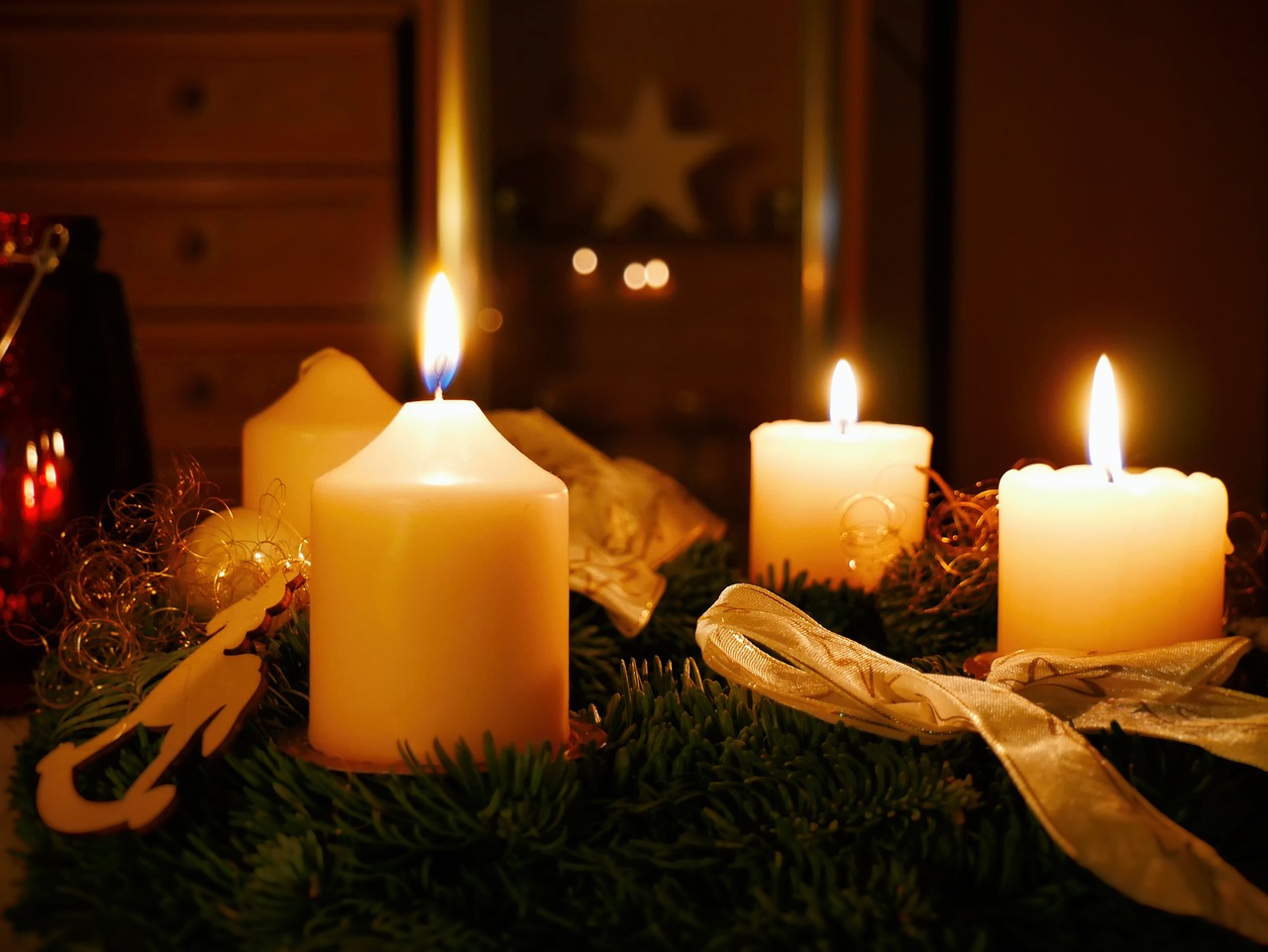
Spring Wreath Inspirations
Spring is a time of renewal and vibrant colors, making it the perfect season to create a stunning wreath that welcomes the warmth and beauty of nature. When you think of spring, imagine a burst of colors and the sweet scent of blooming flowers. A spring wreath can be a delightful addition to your home, setting the tone for the season ahead. So, let’s dive into some inspiring ideas that will help you craft a wreath that not only beautifies your door but also brings a smile to your face every time you see it.
One of the best ways to capture the essence of spring is by incorporating a variety of floral elements. Think about using flowers like tulips, daffodils, and hyacinths, which are often the first to bloom after winter. Their bright hues can create an eye-catching contrast against a natural grapevine or straw base. You can arrange these flowers in clusters or scatter them throughout the wreath for a more organic look. Don’t hesitate to mix in some artificial flowers for added longevity and color variety, especially if you want your wreath to last through the season.
Another fantastic idea is to use greenery as a foundational element. Incorporating various types of foliage, such as eucalyptus, ferns, or ivy, can add a lush, textured feel to your wreath. The combination of colorful flowers and rich greenery creates a balanced and inviting design. When arranging your greenery, think of it as the backdrop that enhances your floral elements. You can use a mix of fresh and faux greenery to maintain a vibrant look without the worry of wilting.
For a more personalized touch, consider adding elements that reflect your personal style or interests. Perhaps you could incorporate small decorative items like butterflies, birds, or even a cute little birdhouse. These accents can serve as conversation starters and make your wreath truly unique. Additionally, you might want to explore using a color palette that complements your home’s exterior. Soft pastels or bold, bright colors can both work wonderfully, depending on your preference.
If you're feeling particularly crafty, why not try creating a themed wreath? For instance, you could design a wreath around a specific color scheme, such as shades of pink and yellow, to evoke the cheerful spirit of spring. Alternatively, you could choose to incorporate seasonal elements like small eggs or nests to celebrate Easter. This approach not only enhances your wreath's visual appeal but also connects it to the celebrations of the season.
Lastly, don’t forget about the finishing touches. A beautiful ribbon can make all the difference in your wreath design. Choose a ribbon that complements your color scheme and adds a touch of elegance. Whether it's a simple bow or a more elaborate cascading ribbon, this detail can elevate your wreath from lovely to absolutely stunning.
Q: What materials do I need to create a spring wreath?
A: You’ll need a base (like grapevine or foam), floral wire, hot glue, and a variety of flowers and greenery. Don’t forget any decorative elements you want to include!
Q: How long will a spring wreath last?
A: If you use fresh flowers, your wreath will last about a week. However, using artificial flowers and greenery can keep your wreath looking beautiful for the entire season.
Q: Can I hang my wreath indoors?
A: Absolutely! An indoor wreath can brighten up your living space and bring a touch of spring indoors, especially if you place it in a prominent spot.
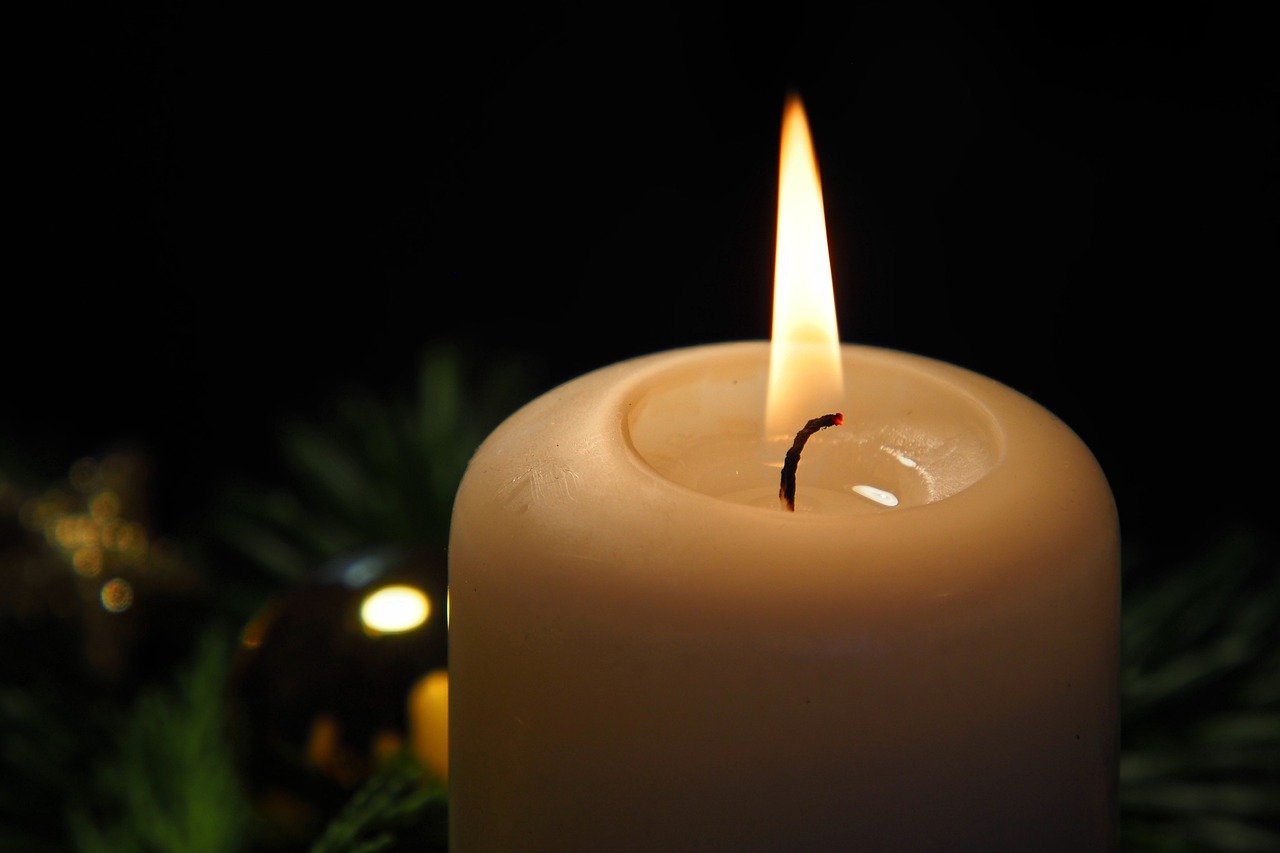
Floral Arrangements
When it comes to creating a stunning DIY wreath, play a pivotal role in setting the tone and inviting a sense of warmth into your home. Imagine walking up to your door and being greeted by a vibrant explosion of colors and scents that reflect the beauty of nature. The right mix of flowers can transform an ordinary wreath into a captivating piece of art that draws the eye and sparks joy.
To achieve a lush and inviting look, consider incorporating a variety of flowers that not only complement each other but also add depth and dimension to your design. For instance, you might choose to mix bold blooms like peonies and sunflowers with delicate fillers such as baby's breath or lavender. This combination creates a beautiful contrast that is visually appealing and adds a touch of elegance.
When selecting flowers for your wreath, think about the season and the overall theme you want to convey. For example, in spring, you might opt for pastel colors and soft petals, while in summer, vibrant hues and larger blossoms can make a statement. Here are a few tips to keep in mind:
- Choose a focal flower: Start with a standout flower that will be the centerpiece of your arrangement. This could be a large bloom like a hydrangea or a striking rose.
- Layer your flowers: Use different heights and sizes of flowers to create a dynamic arrangement. Place larger flowers towards the center and smaller ones around the edges.
- Balance colors: Ensure that the colors of your flowers complement each other. A good rule of thumb is to use an odd number of flower types for a more natural look.
Additionally, don't forget about the importance of greenery! Incorporating various types of foliage can enhance your floral arrangement, providing a backdrop that highlights the blooms. Consider using eucalyptus, ferns, or ivy to add texture and a natural feel to your wreath. These elements can help to fill in gaps and create a more cohesive design.
As you arrange your flowers, take a step back and assess the overall look. It's all about finding the right balance and ensuring that your wreath feels full and inviting. Once you're satisfied with your floral arrangement, secure everything in place using floral wire or hot glue, ensuring that your hard work remains intact for all to admire.
Ultimately, creating floral arrangements for your DIY wreath is not just about the flowers themselves; it’s about expressing your creativity and personal style. So, gather your favorite blooms, let your imagination run wild, and craft a wreath that not only beautifies your door but also brings a smile to your face every time you walk by.
Q: What types of flowers are best for a DIY wreath?
A: The best flowers vary by season. In spring, consider tulips and daffodils; in summer, sunflowers and peonies; for fall, try chrysanthemums and dried leaves; and for winter, use evergreens and poinsettias.
Q: How do I keep my floral wreath looking fresh?
A: To maintain freshness, use floral preservatives and mist your wreath with water. If using real flowers, keep the wreath in a cool, shaded area when not displayed.
Q: Can I use artificial flowers for my wreath?
A: Absolutely! Artificial flowers can provide a long-lasting solution and can be used year-round without worrying about wilting or fading.
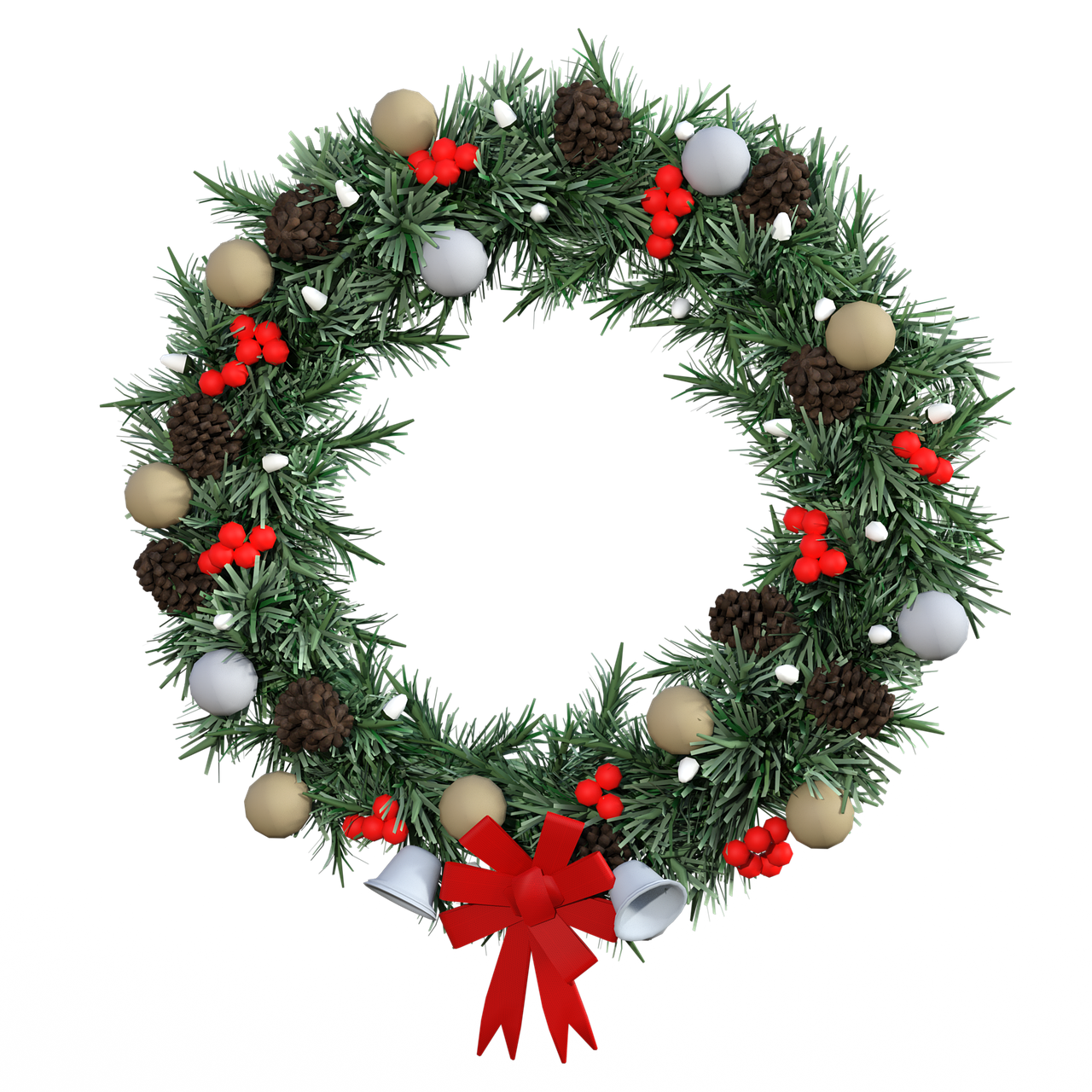
Using Greenery
When it comes to crafting the perfect DIY wreath, greenery is your secret weapon. Not only does it add texture and depth, but it also brings a touch of nature that can elevate your wreath from ordinary to extraordinary. Think of greenery as the canvas for your floral masterpiece; it frames your flowers and enhances their beauty. Whether you're using fresh, dried, or artificial foliage, the right selection can create a lush, inviting look that welcomes guests to your home.
One of the most popular choices for wreath-making is evergreen. Its rich green hues and sturdy nature make it perfect for crafting wreaths that last through the seasons. Imagine a wreath adorned with deep green pine needles, accented by vibrant red berries—a stunning centerpiece for your front door during the winter months. Alternatively, in the warmer months, you can opt for lighter greens like eucalyptus or ferns, which evoke a fresh, airy feel. These types of greenery can serve as a beautiful backdrop for colorful flowers, creating a harmonious balance in your design.
When incorporating greenery, consider mixing different types to add visual interest. For example, a combination of spruce, cedar, and ivy can create a rich tapestry of textures and shades. You can also think about layering your greenery; start with larger, more robust leaves at the base and gradually add smaller, delicate foliage on top. This technique not only creates depth but also gives your wreath a more organic, natural look.
Don't forget about the seasonal aspect of your greenery! In the fall, you might want to include maple leaves or goldenrod for those warm autumn vibes. Meanwhile, spring could call for bright green moss or freshly cut herbs like rosemary or thyme, which not only look beautiful but also smell divine! The possibilities are endless, and experimenting with different combinations can lead to stunning results.
Lastly, if you're looking to add a personal touch, consider incorporating dried flowers or berries among your greenery. This not only adds color but also creates a unique flair that reflects your personal style. Remember, your wreath should tell a story—your story. So, let your creativity flow and have fun with it!
- What types of greenery are best for wreath-making? Popular choices include evergreen branches, eucalyptus, ferns, and seasonal foliage like maple leaves or rosemary.
- How do I keep my wreath looking fresh? If using fresh greenery, mist it with water regularly and keep it in a cool, shaded area. Dried and artificial options can last much longer without maintenance.
- Can I mix different types of greenery? Absolutely! Mixing various types of greenery can add depth and texture to your wreath, making it visually appealing.

Fall Wreath Inspirations
As the leaves begin to change and the air turns crisp, it's the perfect time to bring the essence of autumn right to your front door with a stunning fall wreath. Imagine walking up to your home and being greeted by a beautiful display of rich oranges, deep reds, and warm yellows. A fall wreath is not just a decoration; it’s a warm embrace that welcomes guests and family alike. So, how do you create this seasonal masterpiece? Let’s dive into some inspiring ideas that will help you craft a wreath that captures the spirit of fall.
One popular approach is to incorporate natural elements that reflect the beauty of the season. Think about using dried leaves, pinecones, and even small pumpkins to add texture and depth. You can collect colorful leaves from your yard or nearby park, and their unique shapes and hues will create a stunning backdrop for your wreath. Additionally, using faux elements can help your wreath last through the season without wilting or fading. Consider mixing both real and artificial components for a dynamic look.
For those who love a bit of whimsy, consider adding festive accents like miniature scarecrows or cute woodland creatures. These playful touches can bring a smile to anyone who sees your wreath. You might even want to create a theme around your wreath, such as a harvest celebration or a cozy farmhouse feel. This could involve using burlap ribbons, rustic wooden signs, or even twinkling fairy lights for a magical touch.
To help you visualize your options, here’s a quick table of some popular materials and their uses in fall wreaths:
| Material | Use |
|---|---|
| Dried Leaves | Colorful base and texture |
| Pinecones | Natural accents and dimension |
| Mini Pumpkins | Seasonal focal points |
| Burlap | Rustic ribbons and bows |
| Fairy Lights | Add a magical glow |
When crafting your fall wreath, it’s essential to think about the overall shape and size. A circular wreath is classic, but don’t shy away from experimenting with different shapes, such as a square or heart. This can give your wreath a unique twist that sets it apart from the rest. The size should also complement your door; a larger wreath can make a bold statement, while a smaller one can be more subtle yet charming.
Finally, don’t forget to incorporate your personal style into your wreath! Whether you prefer a more traditional look or a modern aesthetic, the key is to make it reflect who you are. Consider adding personal touches such as family initials or a seasonal greeting to make your wreath truly one-of-a-kind.
In conclusion, creating a fall wreath is a delightful way to celebrate the season. With a little creativity and the right materials, you can craft a beautiful piece that enhances your home’s entrance. So, gather your supplies, unleash your imagination, and let your front door be a canvas for your autumn artistry!
Q1: How can I preserve natural elements in my fall wreath?
A1: To preserve natural elements like leaves and pinecones, consider using a clear sealant spray. This will help maintain their color and prevent decay.
Q2: What is the best way to store my wreath after the fall season?
A2: Store your wreath in a cool, dry place, ideally in a wreath box or a large plastic bag to keep it dust-free and protected from damage.
Q3: Can I use a foam base for my fall wreath?
A3: Absolutely! A foam base can provide excellent support for heavier decorations like pumpkins and can make it easier to arrange your elements.
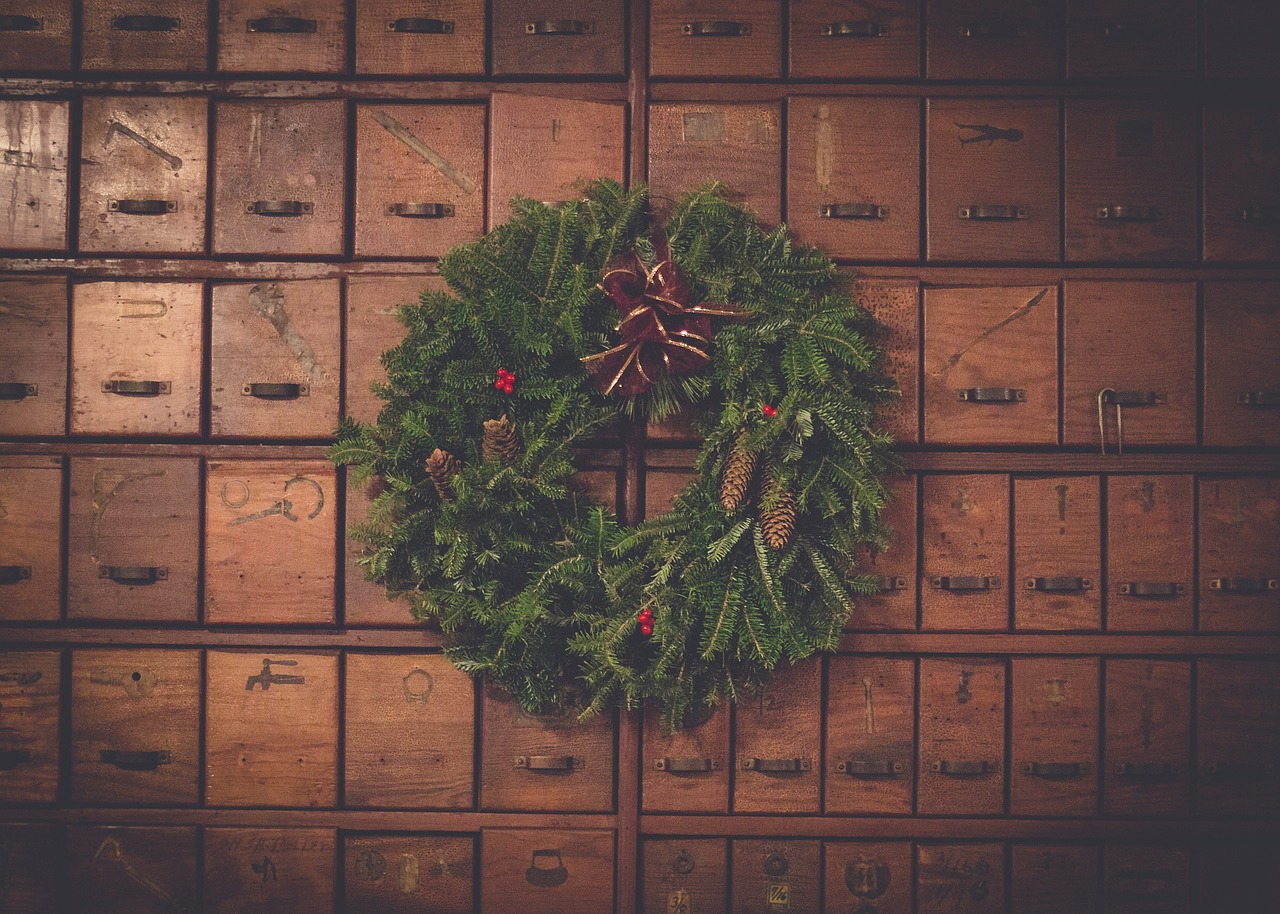
Crafting Techniques
When it comes to creating stunning DIY wreaths, mastering is essential. The right techniques not only enhance the visual appeal of your wreath but also ensure its durability. Let's dive into some of the most effective methods that can elevate your DIY game to the next level.
One of the fundamental techniques you should get familiar with is wire wrapping. This method involves using floral wire to secure different elements of your wreath, such as flowers, leaves, and other decorations. Wire wrapping is particularly beneficial because it offers a strong hold while allowing for flexibility in design. You can adjust the placement of your decorations even after they are attached, making it a versatile option for any wreath project.
To start with wire wrapping, gather your materials: floral wire, wire cutters, and your decorative elements. Begin by cutting a length of wire, ensuring it's long enough to wrap around your chosen items securely. As you wrap, make sure to twist the wire tightly but not so much that it damages your materials. This technique is especially useful when working with heavier items like faux pumpkins or larger flowers.
Another essential technique is hot gluing. This method is quick and effective for attaching decorations to your wreath base. Hot glue provides a strong bond, making it ideal for securing items that may not be suitable for wire wrapping. However, it's important to use hot glue carefully to avoid burns and ensure a neat finish. Here are a few tips for successful hot gluing:
- Temperature Control: Allow your glue gun to heat up properly before using it for optimal adhesion.
- Small Dabs: Apply small dabs of glue rather than large blobs to maintain a clean look.
- Quick Placement: Work quickly after applying glue, as it sets rapidly.
Lastly, consider using a foam base for your wreath. Foam bases provide a sturdy foundation that can easily hold various decorations. They are lightweight and can be shaped to suit your design needs, making them a popular choice among DIY enthusiasts. When using a foam base, you can either poke items directly into it or secure them with wire or glue, depending on your preference.
In summary, mastering these crafting techniques—wire wrapping, hot gluing, and using foam bases—can significantly enhance your DIY wreath-making experience. By combining these methods, you can create beautiful, durable wreaths that showcase your personal style and creativity. So, roll up your sleeves and let your imagination run wild as you craft your next stunning wreath!
Q: What materials are best for a DIY wreath?
A: The best materials depend on the season and your personal style. Common choices include natural elements like twigs and flowers, artificial flowers, and seasonal decorations like pumpkins or ornaments.
Q: How do I hang my wreath?
A: There are several ways to hang a wreath, including using traditional hooks, decorative ribbons, or even suction cups for glass doors. Choose a method that complements your decor style.
Q: Can I use real flowers in my wreath?
A: Yes, real flowers can be used for a fresh look, but they have a shorter lifespan. If you're looking for longevity, consider using artificial flowers or dried arrangements.
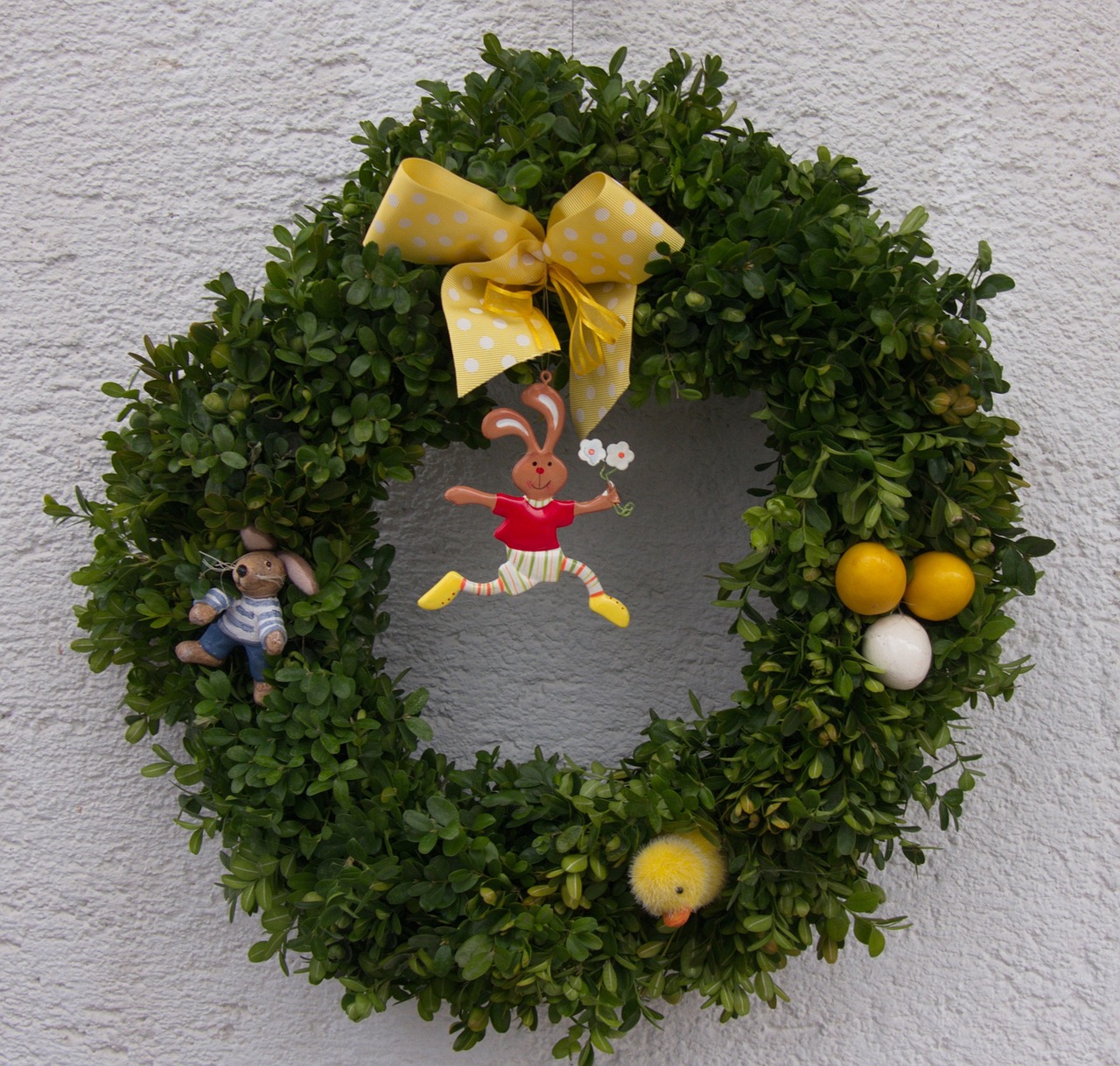
Wire Wrapping Basics
Wire wrapping is a fundamental technique that can significantly enhance your DIY wreath projects. It provides a sturdy way to secure various elements, ensuring that your beautiful creations withstand the test of time and weather. Imagine your wreath as a canvas, and the wire as the brush that holds everything together. Without the right technique, even the most stunning decorations can fall apart, leaving you with a less-than-perfect display. So, let’s dive into the essentials of wire wrapping!
To start wire wrapping, you’ll need a few basic materials. Here’s a quick rundown of what you’ll want to gather:
- Floral Wire: This is your primary tool. It comes in various gauges, but a 22 or 24 gauge is perfect for most wreath projects.
- Wire Cutters: You’ll need these to cut the floral wire to your desired lengths.
- Pliers: A good pair of needle-nose pliers will help you twist and secure the wire tightly.
- Decorative Elements: These can range from flowers to ornaments, anything you want to incorporate into your wreath.
Once you have your materials ready, it’s time to get hands-on! Begin by cutting a length of floral wire, typically around 12-18 inches, depending on the size of the item you're attaching. Remember, it’s always better to have a little extra wire than not enough. Next, position your decorative element where you want it on the wreath form. With the wire in hand, wrap it around the base of the element and the wreath form, twisting it tightly to secure it in place. This is where those pliers come in handy; they’ll help you get a good grip and ensure that the wire is snug.
As you continue to add elements, be sure to overlap the wire around the wreath form to create a cohesive look. Think of it like weaving a tapestry; each twist and turn adds to the overall design. If you’re working with heavier decorations, like small pumpkins or thick branches, don’t hesitate to use multiple strands of wire for added support. The goal is to create a wreath that not only looks good but also holds up against the elements.
After you’ve secured all your elements, take a moment to inspect your work. Gently tug on the decorations to make sure they’re firmly in place. If anything feels loose, simply add more wire and re-secure it. Once you’re satisfied, trim any excess wire with your cutters, and tuck the ends away to prevent any sharp edges from being exposed.
Wire wrapping might seem daunting at first, but with a little practice, you’ll find it can be a fun and rewarding part of the wreath-making process. It allows you to express your creativity while ensuring that your wreath remains intact and beautiful for all to see. So, roll up your sleeves, grab that wire, and let your imagination run wild!
Q: What gauge wire should I use for my wreath?
A: For most wreath projects, a 22 or 24 gauge floral wire works best. It's sturdy enough to hold decorations yet flexible enough to work with easily.
Q: Can I use other types of wire?
A: Yes! While floral wire is ideal, you can also use craft wire or even jewelry wire for lighter decorations. Just make sure it’s flexible enough for wrapping.
Q: How do I know if my wire wrapping is secure?
A: After wrapping, gently tug on the decorations. If they feel stable and don’t shift, your wire wrapping is secure. If they feel loose, add more wire and re-secure.
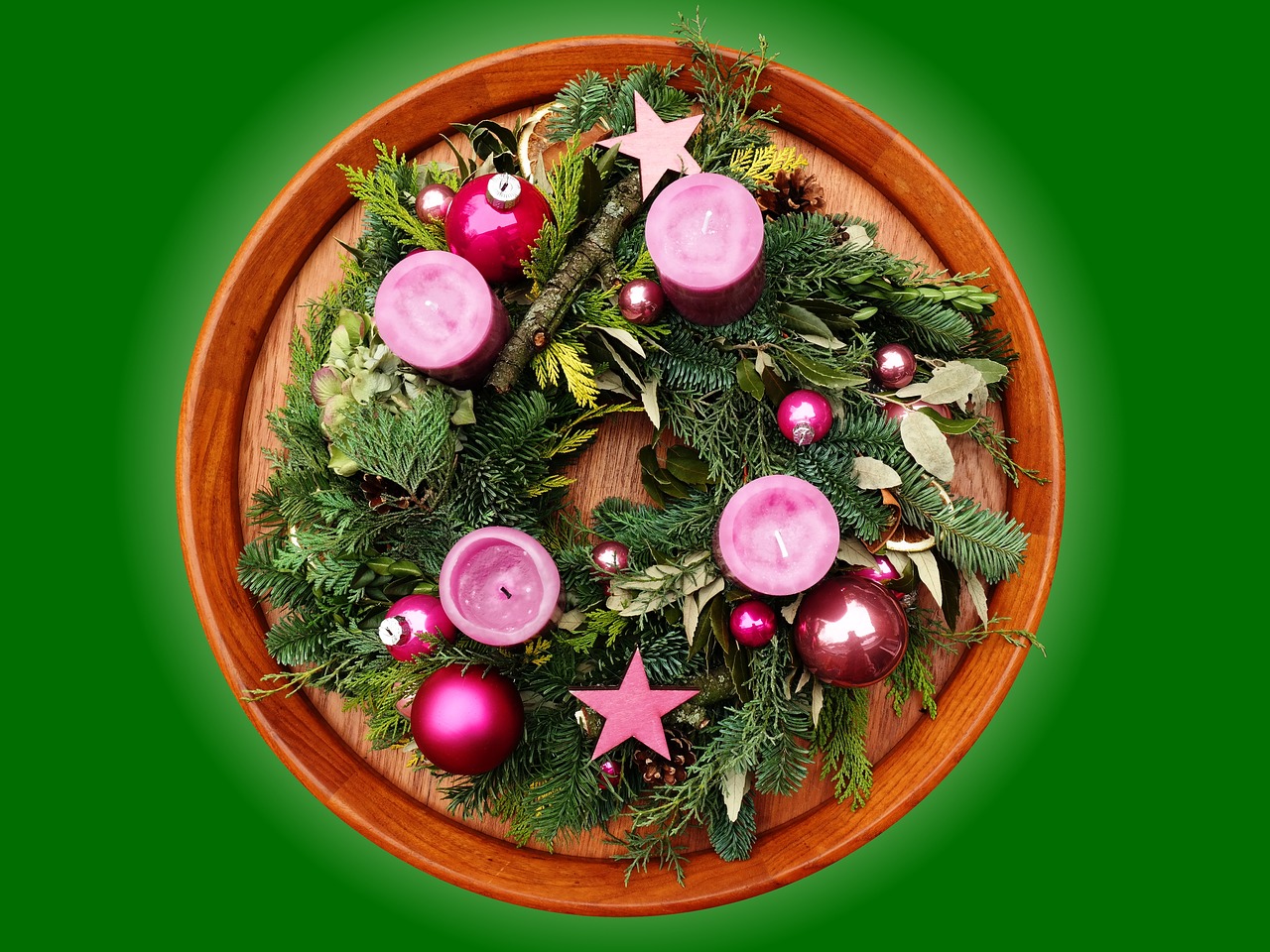
Hot Gluing Tips
Hot gluing is one of the most efficient and versatile methods for attaching decorations to your DIY wreath. Whether you’re working with artificial flowers, ribbons, or other embellishments, mastering the art of hot gluing can make a significant difference in the durability and appearance of your wreath. Here are some essential tips to ensure your hot gluing experience is smooth and successful.
First and foremost, it's crucial to choose a high-quality hot glue gun and glue sticks. A low-temperature glue gun is ideal for delicate materials, while a high-temperature one works best for sturdier items. This choice can prevent damage to your decorations and ensure a strong bond. When you’re ready to start gluing, remember to heat the glue gun properly. Allow it to warm up for a few minutes before applying glue; this step is vital for achieving a secure hold.
When applying glue, less is often more. A small dot or line of glue is usually sufficient to hold elements in place. Overdoing it can lead to unsightly glue strings and an overall messy look. If you do accidentally create glue strings, don’t worry! Simply use a heat gun or blow dryer on a low setting to melt them away gently.
Another helpful tip is to work in sections. Instead of trying to glue everything at once, take your time and focus on one area of the wreath at a time. This approach not only helps you maintain control but also allows you to step back and assess your design as you go along. If you’re adding multiple layers, start with the larger elements and build up to the smaller details.
For larger or heavier items, consider using a supporting structure like a wire frame or a foam base. This technique provides extra stability and makes it easier to position your decorations. You can also use pins or floral wire in conjunction with hot glue for added security, especially for items that might be prone to falling off.
Finally, always remember to let your wreath dry completely before hanging it up. This waiting period allows the glue to set properly and ensures that your hard work won’t come undone at the first gust of wind. Once dry, your wreath will not only look beautiful but will also stand the test of time.
Here are some common questions about hot gluing and DIY wreath making:
- Can I use a regular glue stick with a hot glue gun? No, it’s best to use glue sticks specifically designed for hot glue guns to ensure a strong bond.
- What should I do if the glue dries too quickly? If you find that the glue is drying too fast, try working in smaller sections or using a low-temperature glue gun.
- How can I remove hot glue from surfaces? You can gently peel it off or use a heat source to soften the glue, making it easier to remove.
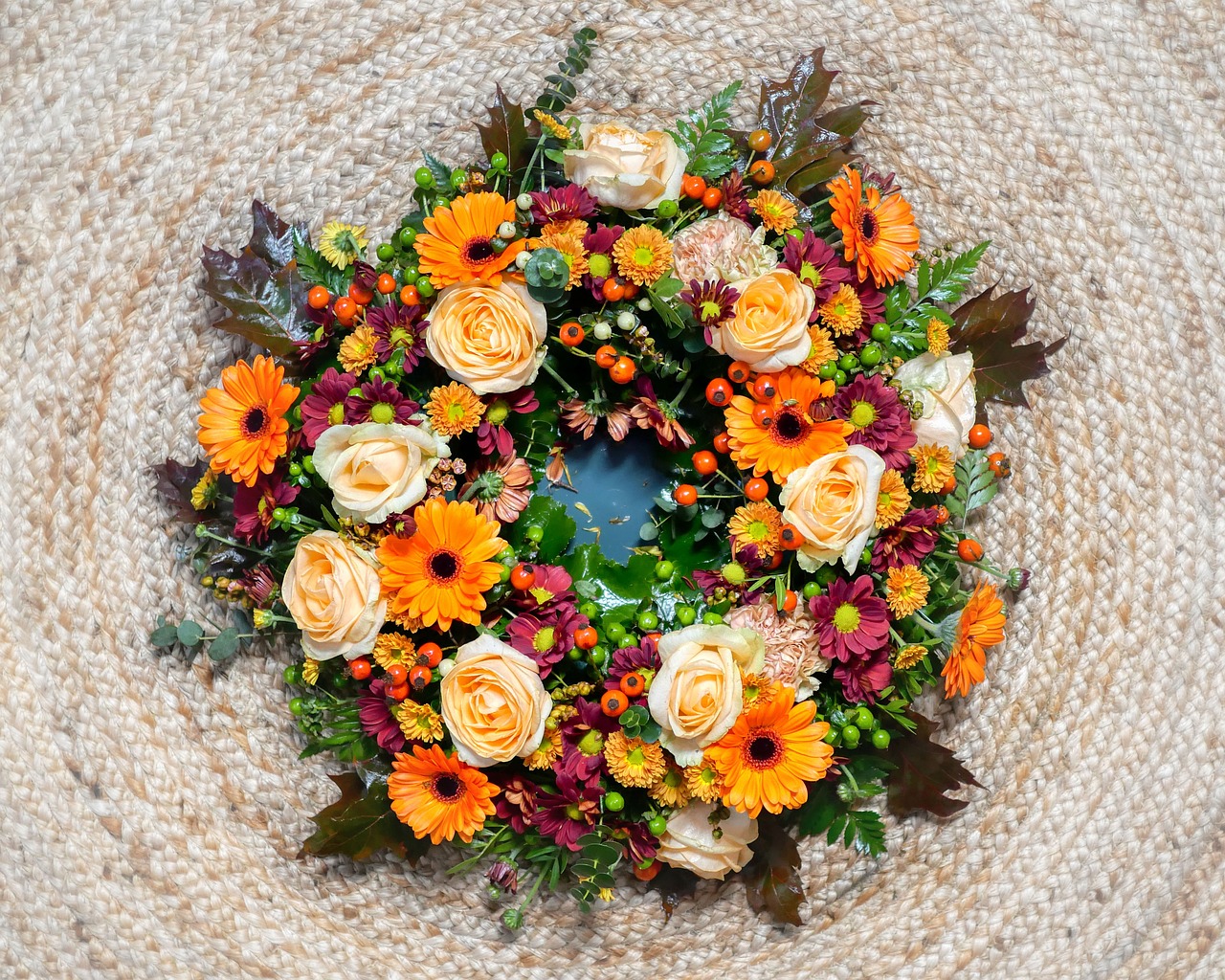
Personalizing Your Wreath
When it comes to decorating your home, nothing says "welcome" quite like a personalized wreath hanging on your door. Adding a personal touch not only makes your wreath stand out but also reflects your unique style and personality. Think of your wreath as a canvas where you can express your creativity and make a statement. Whether you want to showcase your family name, initials, or even a seasonal theme, the possibilities are endless!
One of the most delightful ways to personalize your wreath is by incorporating monograms. Monograms can add a touch of elegance and sophistication, making your wreath feel truly custom-made. You can choose from various materials to create your monogram, such as wood, metal, or even fabric. For instance, a rustic wooden monogram can provide a charming farmhouse vibe, while a sleek metal one can give a modern twist. Imagine walking up to your door and seeing your initials beautifully displayed—it's like a warm hug every time you come home!
Besides monograms, you can also play around with color schemes and themes. Choosing the right colors can enhance your wreath's overall aesthetic and ensure it complements your home’s exterior. For example, if your home features soft pastels, you might opt for a wreath adorned with light pinks, blues, and whites. On the other hand, if your decor leans towards bold and vibrant colors, a wreath with deep reds, oranges, and yellows can make a stunning statement. By aligning your wreath’s color palette with your home’s theme, you create a cohesive look that’s visually appealing.
Don’t forget to consider the seasonal elements you can incorporate into your wreath. Each season brings a unique charm, and personalizing your wreath to reflect these changes can keep your decor feeling fresh and exciting. Think about adding small ornaments, seasonal flowers, or themed decorations that resonate with the time of year. For example, during fall, you might include tiny pumpkins or acorns, while in spring, you could use vibrant tulips or daisies. This not only personalizes your wreath but also allows you to celebrate the beauty of each season.
To help you visualize how you can personalize your wreath, here’s a simple table summarizing some ideas:
| Personalization Idea | Description |
|---|---|
| Monograms | Add initials using wood, metal, or fabric for a classy touch. |
| Seasonal Elements | Incorporate decorations that reflect the current season. |
| Color Schemes | Select colors that complement your home’s exterior for a cohesive look. |
| Custom Decorations | Use unique items like family photos or meaningful symbols to make it yours. |
Ultimately, personalizing your wreath is about making it your own. It's an opportunity to express who you are and what you love. So, gather your materials, unleash your creativity, and let your personality shine through in your DIY wreath. Remember, it’s not just a decoration; it’s a reflection of your home and the warmth you want to share with everyone who visits!
- What materials are best for personalizing a wreath? You can use wood, metal, fabric, or even paper for monograms and decorations.
- How can I change my wreath for different seasons? Consider using removable decorations or seasonal elements that can be swapped out easily.
- Can I use artificial flowers in my wreath? Absolutely! Artificial flowers are durable and can be used for multiple seasons.
- What tools do I need to personalize my wreath? Basic tools include scissors, hot glue gun, wire, and any crafting supplies for your chosen decorations.
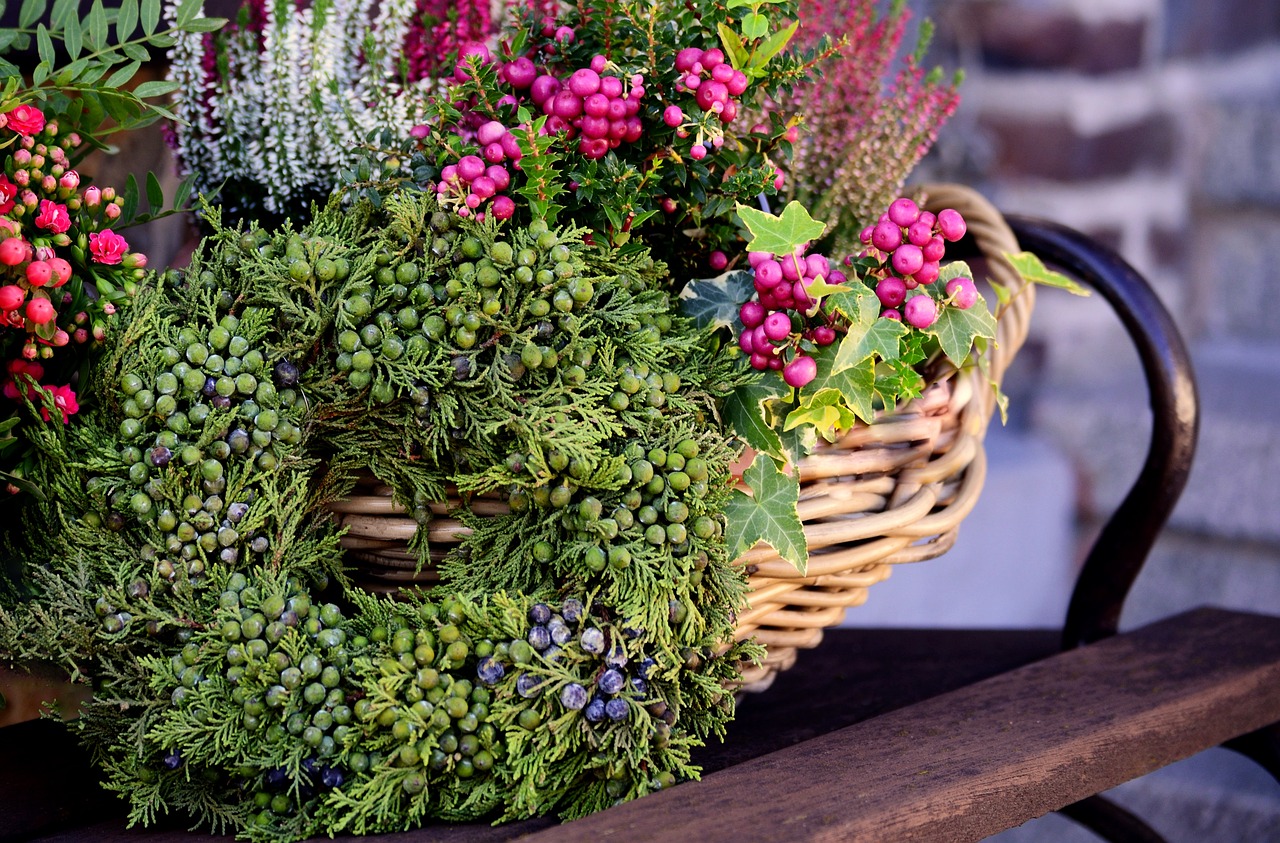
Monogram Ideas
Adding a monogram to your DIY wreath is a fantastic way to infuse your personal style and create a unique focal point that reflects your identity. Imagine walking up to your door and being greeted by a beautifully crafted wreath adorned with your initials—it’s like a warm hug from home! Monograms can be crafted from various materials, making them versatile enough to suit any season or occasion. Here are some creative ideas to consider when designing monograms for your wreath:
1. **Wooden Letters**: Wooden initials can bring a rustic charm to your wreath. You can choose to paint them in vibrant colors or leave them natural for a more organic look. Personalizing them with a wood stain that complements your wreath’s color scheme can add a touch of elegance.
2. **Fabric Letters**: If you’re looking for a softer touch, consider using fabric to create your monogram. Felt, burlap, or even patterned cotton can be used to craft letters that are not only visually appealing but also add texture to your wreath. You can sew or glue these letters onto your wreath for a charming effect.
3. **Metal Monograms**: For a sleek and modern look, metal initials can be a stunning addition. These can be found in various finishes such as gold, silver, or even rusted for a vintage feel. Metal monograms can be attached with wire or hot glue, ensuring they stay secure throughout the seasons.
4. **Floral Monograms**: Why not combine your initials with flowers? You can create a floral arrangement that spells out your initials, using faux or dried flowers. This method not only makes your monogram stand out but also integrates beautifully with the overall floral theme of your wreath.
5. **Seasonal Variations**: Consider changing your monogram based on the season. For example, during autumn, you could incorporate leaves or acorns into your design, while in spring, fresh flowers could be used to accentuate your initials. This keeps your wreath looking fresh and exciting all year round!
When incorporating a monogram into your wreath, it’s important to consider the overall balance and design. Ensure that the size of the letters complements the size of the wreath and that they don’t overpower the other decorative elements. A well-placed monogram can draw the eye and create a cohesive look that welcomes guests into your home.
In summary, monograms can transform a simple wreath into a personalized masterpiece. Whether you opt for wooden, fabric, metal, or floral designs, your creativity knows no bounds. So, grab your crafting materials and let your imagination run wild as you create a monogram that speaks to your style!
Here are some common questions and answers about creating monograms for your wreaths:
- What materials are best for making a monogram? You can use wood, fabric, metal, or even floral elements to create a monogram that suits your wreath's theme.
- How do I attach my monogram to the wreath? Depending on the material, you can use hot glue, wire, or even sewing techniques to secure your monogram.
- Can I change my monogram seasonally? Absolutely! Changing your monogram with the seasons can keep your wreath looking fresh and aligned with festive themes.
- What size should my monogram be? The size of the monogram should be proportional to the wreath. It should be noticeable but not overpowering.

Color Schemes and Themes
Choosing the right color scheme for your DIY wreath can truly transform it from a simple decoration into a stunning focal point for your door. Think of your wreath as a canvas, and the colors as your palette. The hues you select not only reflect your personal style but also set the tone for your home’s entrance. For instance, a vibrant red and green color scheme can evoke the festive spirit of Christmas, while soft pastels might bring a gentle, welcoming feel for spring.
When considering themes for your wreath, it’s essential to think about the season, your home’s exterior, and even your personality. Here are a few ideas to inspire your creativity:
- Seasonal Themes: Embrace the colors of each season. For example, rich oranges and browns for fall, bright florals for spring, and icy blues and whites for winter.
- Holiday Themes: Tailor your wreath to specific holidays. Think red, white, and blue for Independence Day, or shades of orange and black for Halloween.
- Nature-Inspired Themes: Use colors that mimic the natural world. Greens and browns can create an earthy feel, while blues and whites can bring a refreshing coastal vibe.
Another important aspect of color selection is ensuring that your wreath complements your home’s exterior. For instance, if your door is painted a bold color, you might want to choose contrasting hues to make your wreath pop. Conversely, if your door is a neutral shade, you can opt for vibrant colors to create a striking contrast. It’s all about balance!
To help visualize your ideas, consider creating a small color palette using paint swatches or fabric samples. This can guide you as you gather materials and ensure that everything works harmoniously together. You can also use online tools or apps that allow you to experiment with different color combinations digitally.
Ultimately, the goal is to create a wreath that not only looks beautiful but also feels personal. Whether you choose a monochromatic scheme for a sleek and modern look or a mix of various colors for a more eclectic style, let your creativity shine through. After all, your wreath is a reflection of who you are and how you want to welcome guests into your home!
Q: How do I choose the right colors for my wreath?
A: Consider the season, your home’s exterior, and your personal style. Use color palettes to guide your choices and ensure harmony.
Q: Can I use artificial flowers in my wreath?
A: Absolutely! Artificial flowers are a great option for longevity and can be found in various colors and styles to suit any theme.
Q: How often should I change my wreath?
A: It’s a good idea to switch your wreath with the seasons or for special holidays to keep your decor fresh and inviting.
Q: What materials work best for a wreath?
A: Popular materials include natural elements like twigs and leaves, as well as artificial flowers, ribbons, and seasonal decorations.

Displaying Your Wreath
Once you've poured your heart and soul into crafting the perfect DIY wreath, the next step is to showcase it in a way that truly reflects your hard work and creativity. Displaying your wreath effectively is not just about hanging it on the door; it’s about making a statement that complements your home’s entrance. So, how can you ensure your wreath stands out and becomes a focal point for your guests? Let’s dive into some creative options!
One of the most traditional yet charming ways to hang your wreath is by using a wreath hook. These hooks come in various styles and sizes, allowing you to find one that matches your wreath's aesthetic. If you're looking for something a bit more decorative, consider using a beautiful ribbon. A wide, vibrant ribbon can add an extra layer of charm, while also allowing you to adjust the height of your wreath easily. Just imagine how a lovely satin ribbon in a seasonal color can elevate your wreath's appearance!
For those who prefer a more modern approach, magnetic wreath hangers are a fantastic option. These handy tools attach to your door's surface and hold your wreath securely in place without any visible hooks. They’re especially great for glass doors, where you want to keep the look sleek and minimalist. Additionally, if you have a door with a decorative panel, you can use a simple command hook placed discreetly to keep the focus on your beautiful creation.
When displaying your wreath, consider the seasonal rotation of your decor. Keeping your wreath fresh and exciting can be as simple as swapping it out with the changing seasons. You might have a vibrant floral wreath for spring, a patriotic theme for summer, and a warm, cozy autumn wreath as the leaves begin to change. To help you keep track of your wreaths and when to switch them out, here’s a quick table:
| Season | Wreath Ideas |
|---|---|
| Spring | Floral wreaths with pastel colors |
| Summer | Patriotic wreaths with red, white, and blue |
| Fall | Wreaths with leaves, pumpkins, and warm tones |
| Winter | Evergreen wreaths with berries and pinecones |
Lastly, think about the overall aesthetic of your entrance. The wreath should harmonize with other elements like your door mat, lighting fixtures, and any additional decor you may have. A well-coordinated look can create a welcoming atmosphere that invites guests into your home. Remember, your wreath is not just a decoration; it’s an extension of your personal style and a warm welcome to all who visit!
Q: How do I keep my wreath looking fresh throughout the season?
A: To maintain the freshness of your wreath, store it in a cool, dry place when not in use. If your wreath has natural elements, consider misting it with water occasionally to prevent it from drying out.
Q: Can I use my wreath indoors as well?
A: Absolutely! Wreaths can make beautiful indoor decorations. Hang them on walls, over mantels, or even as centerpieces on tables.
Q: What if my wreath is too heavy for a hook?
A: For heavier wreaths, ensure you use a sturdy hook or consider using adhesive hooks that can support more weight. Alternatively, a door hanger that fits over the top of the door can also work well.
Q: How often should I change my wreath?
A: It’s a good idea to change your wreath with the seasons or for special occasions. This keeps your decor fresh and exciting!
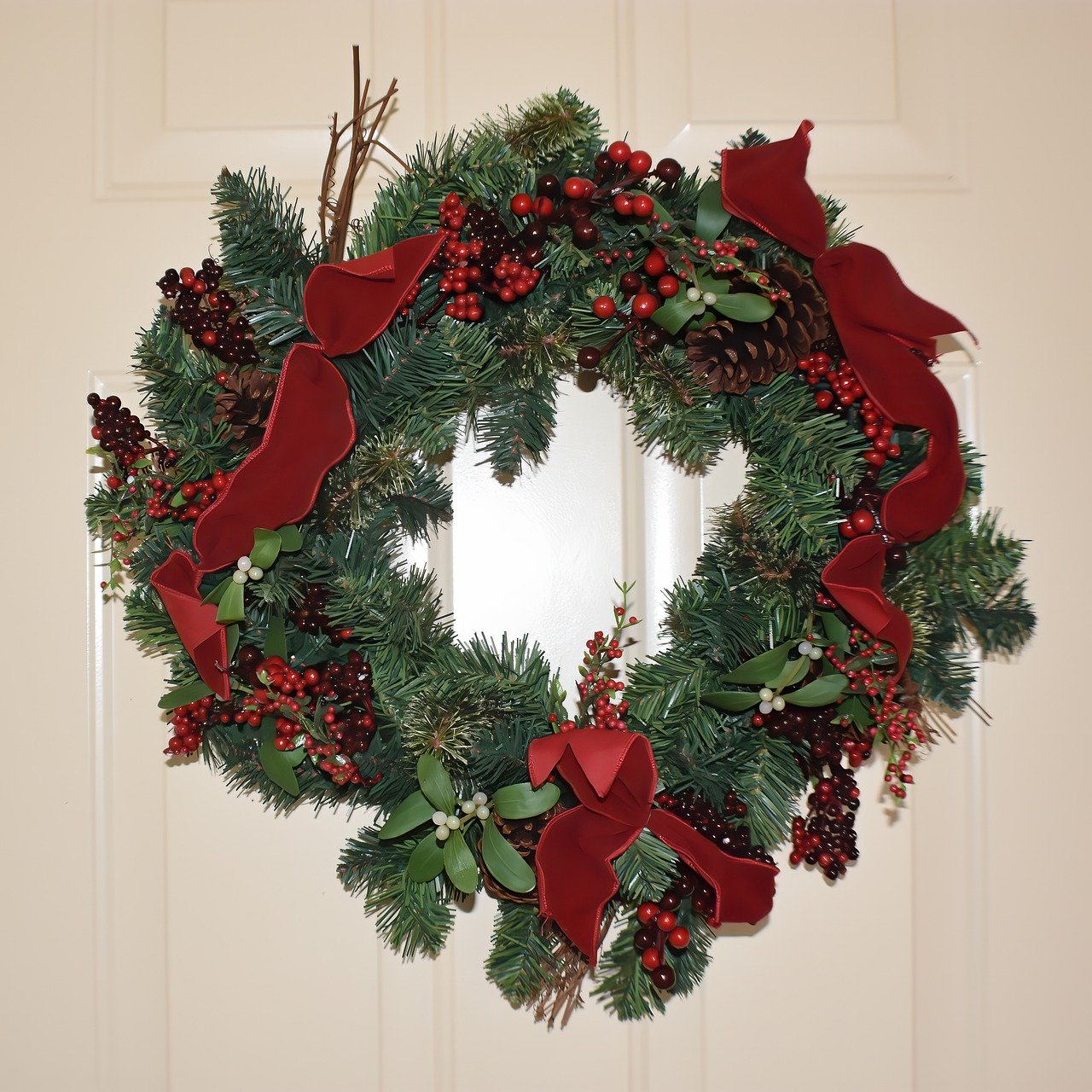
Hanging Techniques
Once you’ve crafted your stunning DIY wreath, the next step is to showcase your masterpiece effectively. The way you hang your wreath can significantly enhance its visual appeal and ensure it stands out as a focal point at your entrance. There are several techniques you can employ, each offering a unique flair and functionality.
One of the most traditional methods is using a simple door hook. These hooks are typically designed to hang over the top of your door, making them incredibly easy to use. They come in various styles, allowing you to choose one that complements your wreath and door decor. If you prefer something a bit more decorative, consider using a beautiful ribbon. A wide, colorful ribbon can add a touch of elegance and can be tied in a bow for a charming finish. Simply attach the ribbon to the back of your wreath and hang it from a hook or nail.
For those who want a more polished look, you might opt for a wreath hanger that can be affixed directly to your door. These hangers often come in beautiful designs and can be a stylish addition to your decor. Alternatively, if you have a glass door, using a magnetic wreath holder can be an excellent choice. This technique allows you to hang your wreath without any visible hardware, creating a clean and modern look.
Another innovative approach is to use command strips. These adhesive strips can hold your wreath securely in place without damaging your door. They’re perfect for seasonal wreaths, as you can easily remove them when it’s time to switch out for a new design. Just ensure that the surface is clean and dry before applying the strip for the best adhesion.
Regardless of the method you choose, always make sure that your wreath is hung at eye level for maximum impact. This way, it becomes a welcoming sight for guests and passersby. Remember, the goal is to create an inviting atmosphere that reflects your personal style. So, experiment with different hanging techniques and find the one that showcases your wreath beautifully!
Q: How do I choose the right hanging technique for my wreath?
A: The right hanging technique depends on your door type and the style of your wreath. For a simple approach, a door hook or ribbon works well. For a more polished look, consider a wreath hanger or command strips.
Q: Can I use a wreath on a glass door?
A: Absolutely! Magnetic wreath holders are perfect for glass doors, as they offer a clean look without damaging the surface.
Q: How do I ensure my wreath stays in place?
A: Using sturdy hooks or command strips can help secure your wreath. Make sure to clean the surface before applying adhesive strips for better adhesion.
Q: Is it okay to leave my wreath outside year-round?
A: It depends on the materials used. Natural elements may deteriorate quickly, while artificial wreaths are designed to withstand outdoor conditions. Consider rotating your wreath seasonally for the best results.
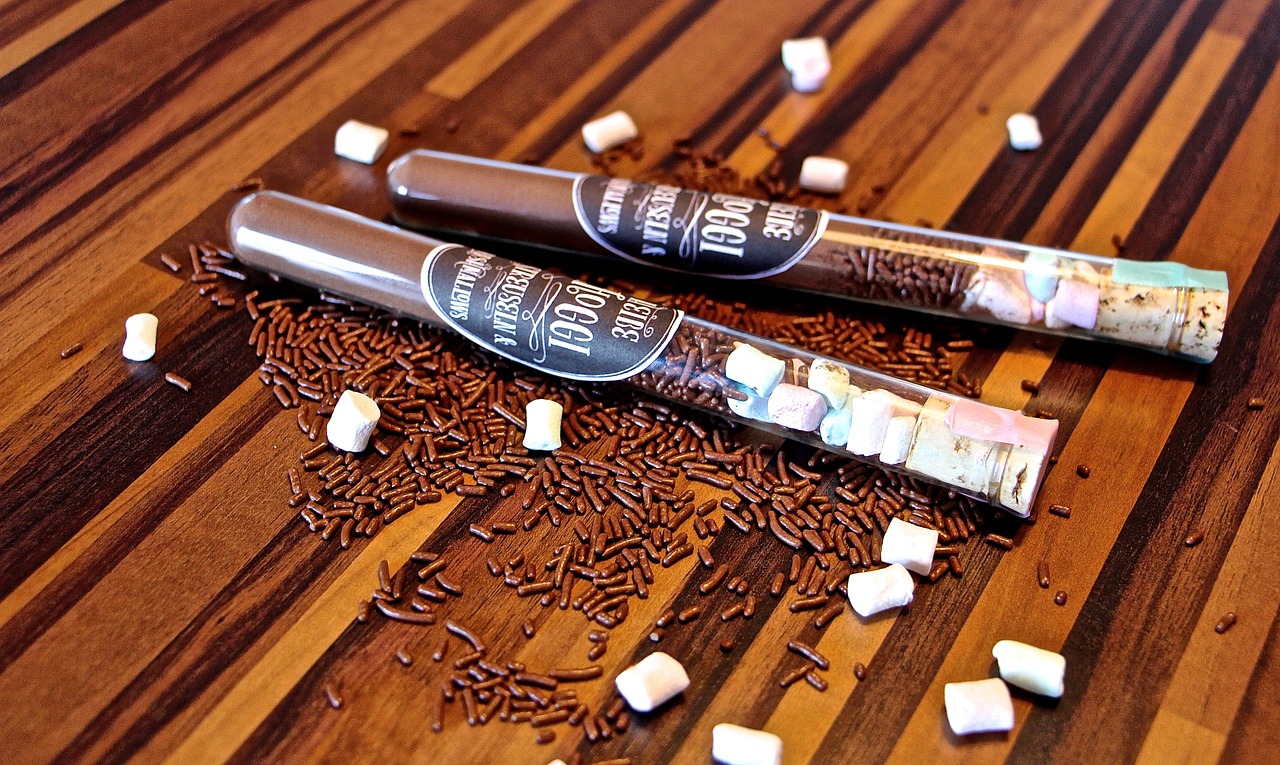
Seasonal Rotation Tips
Keeping your home decor fresh and inviting is all about seasonal rotation. Just like changing your wardrobe with the seasons, your wreath should also reflect the time of year. Not only does this practice enhance your home's curb appeal, but it also allows you to express your creativity and adapt to the changing moods of each season. So, how do you effectively rotate your wreaths? Here are some tips to help you get started!
First and foremost, consider creating a storage system for your wreaths. Designate a specific area in your home, such as a closet or a storage bin, where you can neatly store your wreaths. This makes it easy to access them when it's time to switch things up. Use labeled bins or boxes to categorize your wreaths by season or occasion, ensuring you can quickly find what you need without rummaging through everything.
Next, think about the timing of your rotations. A good rule of thumb is to change your wreaths at the beginning of each season. For instance, you might switch to a vibrant spring wreath at the start of March, a festive summer design in June, a cozy fall wreath in September, and a holiday-themed one in December. Mark these dates on your calendar as a reminder, and you’ll always be ready to celebrate the changing seasons!
When it comes to displaying your wreaths, consider the location where you hang them. Different areas of your home can benefit from seasonal decor. For example, you could place a cheerful spring wreath on your front door, while a more subtle autumn design could be perfect for your living room. This not only keeps your main entrance looking fresh but also spreads the seasonal cheer throughout your home.
Lastly, don't forget to get creative with your wreath designs! Use materials that reflect the season's essence. For instance, for a summer wreath, think of incorporating seashells and bright flowers, while a winter wreath could feature pinecones and evergreen branches. Explore various textures, colors, and themes to keep your wreath collection exciting and engaging.
By following these simple tips, you'll not only maintain a beautiful entrance but also bring a sense of joy and anticipation as each season approaches. So, gather your wreaths, find a cozy spot to store them, and get ready to celebrate the beauty of each season!
- How often should I change my wreath? It's recommended to change your wreath at the beginning of each season, about four times a year.
- What materials are best for seasonal wreaths? Natural elements like flowers and leaves are great for spring and summer, while artificial materials can be used for winter and fall to add longevity.
- Can I make a wreath for special occasions? Absolutely! Feel free to create wreaths for birthdays, anniversaries, or any special events to add a personal touch.
- How should I store my wreaths? Use labeled bins to keep your wreaths organized by season. Store them in a cool, dry place to prevent damage.
Frequently Asked Questions
- What materials are best for making a DIY wreath?
When creating a DIY wreath, the materials you choose can make all the difference! Popular options include natural elements like twigs and dried flowers, artificial flowers for durability, and seasonal decorations such as ornaments for holidays. Think about your personal style and the overall theme you want to convey!
- How can I create a seasonal wreath?
Crafting a seasonal wreath is all about embracing the colors and motifs of each time of year. For instance, you can use vibrant flowers and pastel colors for spring, warm tones and pumpkins for fall, and festive ornaments for Christmas. Just let your creativity flow and have fun with it!
- What are some crafting techniques I should know?
Mastering a few key techniques can take your wreath-making to the next level. Wire wrapping is essential for securing elements, while hot gluing is great for attaching decorations quickly. Don't forget about using a foam base for added stability and style!
- How can I personalize my wreath?
Adding personal touches to your wreath can truly make it your own! Consider incorporating monograms, family names, or custom decorations that reflect your personality. You can use materials like wood or fabric to create a stylish statement piece that stands out!
- What are the best ways to display my wreath?
Once you've crafted your beautiful wreath, showcasing it effectively is key! You can use traditional hooks, decorative ribbons, or even create a unique hanging mechanism. The goal is to ensure it enhances your door's appeal while being functional!
- How often should I rotate my wreath?
Rotating your wreath seasonally is a fantastic way to keep your decor fresh and inviting! Aim to swap out your wreath every few months, or even with each holiday. Just remember to store your wreaths properly to keep them looking their best for the next season!



















